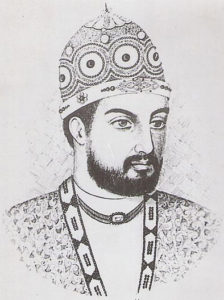Illustrious personages are the flowers of the tree of civilization. They represent the loftiest ideals of a culture and a people. By understanding their lives, readers can imbibe the essence of an era and a country. It is with this intention that we have set out to document the biographies of some of the finest individuals that lived and worked in this great country of ours.
This effort reminds me of a verse fragment from Kalidasa’s Raghuvamsha: तितीर्षुर्दुस्तरं मोहादुडुपेनास्मि सागरम् (titirshurdustaram mohadudupenasmi sagaram) – This is akin to the desire to cross the mighty ocean with a kayak manned by a weak and inexperienced boatman.
My objectives in posting this biography are threefold. Firstly – svabodha-parishuddhyartham – to clarify our intellects and whatever we think we have learnt. The second is to introduce interested readers to such great people and prod them to learn more – prarochanartham. The third is an attempt, howsoever feeble it may be, to lessen some of the enormous debt that we owe to such personalities – to lessen our rishi-rna – our debts to our seers. That sentiment is coupled with our urgent desire to express gratitude in the form of a humble offering to their most esteemed memory. After all, did not the lord of the ocean of milk steal milk and butter from the cowherds of Gokula?
To say that in recent days, the turiya or the fourth ashrama, sanyasa – the launch pad towards the acme of sanatana dharma – has come in for some criticism would be an understatement. While on one end of the spectrum, people are in awe of what sanyasa denotes, the other end is filled with its fair share of sanyasa-baiters and not completely without reason. However, even staunch sanyasins are not exempt from criticism as they denote an other-worldliness that is seen as not contributing to society.
In a similar vein, Brahminism or brahmanya has been derided as 'priest-craft' and oppressive. Indeed, spirituality itself has been criticized as regressive, irrational and not conducive to societal benefit. It is to dispel such ill-entertained notions that one has to examine the biographies of such luminaries as Madhavacharya (the purvashrama name of Vidyaranya) and Sayana, his brother, who working with the Sangama dynasty, epitomized that wonderful amalgam of brahma (spirituality) and kshatra (governance) that is essential for the benefit of society.
The thirteenth and fourteenth centuries CE formed one of the most tumultuous periods in the history of the world. While violent Islamic imperialism spread to Africa, Asia and Europe, it was opposed tooth and nail by the feudalistic pre-renaissance Christian establishment. Greece and Rome, the cradles of European culture had succumbed to religious fundamentalism. While this was the fate of Europe, India was not in a good state either.
The Delhi Sultanate had been in power for over a century by then. The Slave dynasty had been replaced by the Khiljis. Islamic rule had spread across the states of Kashmir, Sind, Punjab, Bihar, Bengal, and Uttar Pradesh. Malik Kafur, the ruthless general of Ala-ud-din Khilji, had subjugated the kingdoms of the Devagiri Yadavas and the Kakatiyas of Warangal by sheer force. More notorious, however, was Malik Kafur’s sacking of Dwarasamudra, Srirangam, Madurai, Chidambaram, and Rameshwaram aided not insignificantly by the fighting amongst the Hoysala, Pandya, Yadava, and Kakatiya rulers. The fate of South India in the period from 1306 CE to around 1320 CE was something that one shudders to imagine. The magnitude of the loot was unprecedented.
Zia-ud-din Barani writes, “The campaign had yielded twenty thousand horses, 612 elephants, 241 tons of gold and countless boxes of jewels and pearls. So much wealth had not been seen in Delhi before and there was no historical record of any loot of this magnitude being brought to Delhi in the past.”
The Khiljis gave way to the Tughlaqs in Delhi. Even the Pandya kingdom in the southernmost part of India was under the direct rule of the Delhi Sultanate. The atrocities of the Madurai Sultanate – Jalal-ud-din Ahsan Shah and later Ghiyas-ud-din Damghani who had the Hoysala King Vira Ballala III skinned alive have been documented extensively by Ibn Battuta. The Anegondi Royal family in Karnataka was also brutally murdered.
Faced on one side by the Tughlaq rule and on the other side by a burgeoning Bahamani Sultanate, the traditional modes of living of sanatana dharma in South India were turned upside down. The economy suffered and so did learning. The unprecedented horror of the brutalities scarred the entire South Indian society and the entire society was looking forward to repel the invasions and re-establish peace and prosperity.
As Krishna promised in the Gita, धर्मसंस्थापनार्थाय सम्भवामि युगे युगे (dharmasamsthapanarthaya sambhavami yuge yuge) – I will manifest myself in every age for the establishment of dharma. Several rose to fulfill the aspirations of the people. One of the most noteworthy among them was Madhava Vidyaranya. This series will cover the life and contributions of this great personality.











































